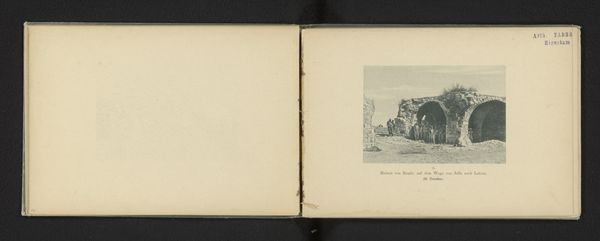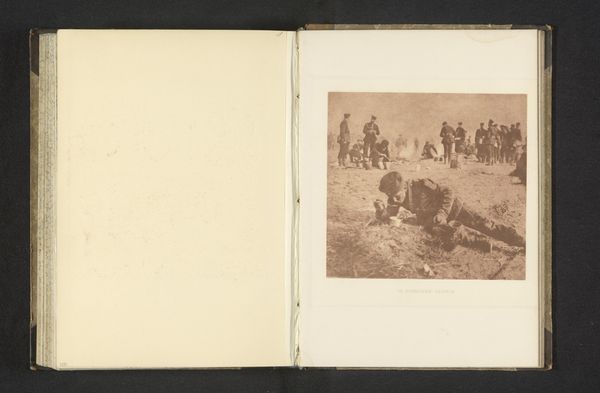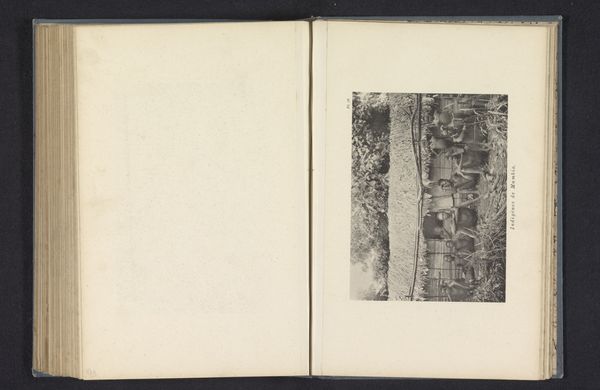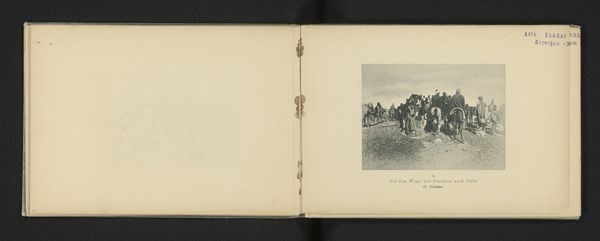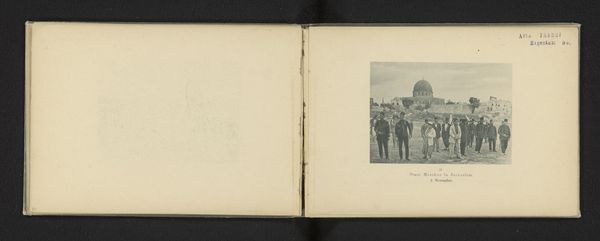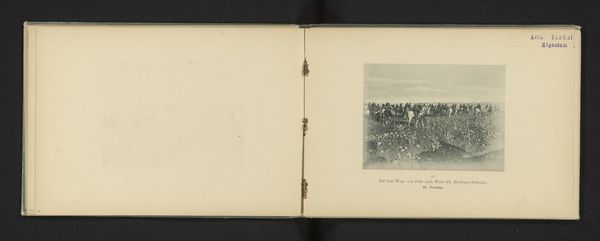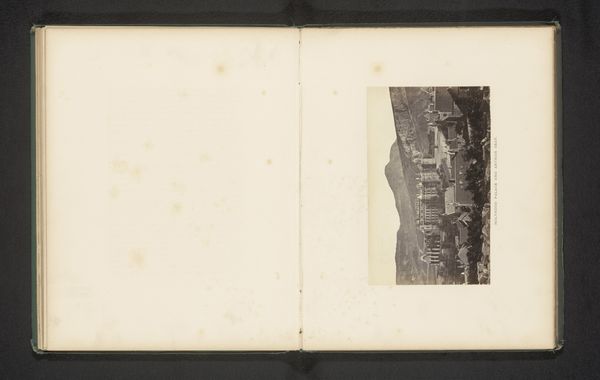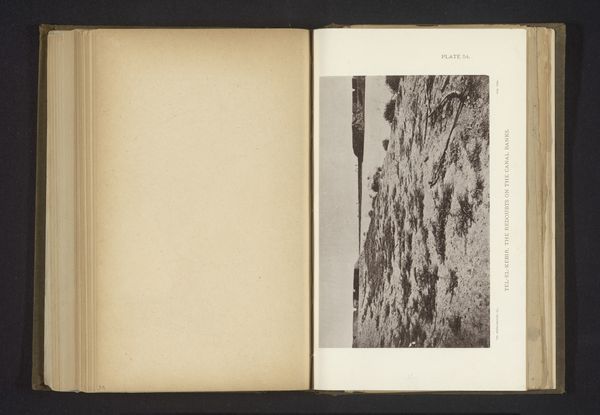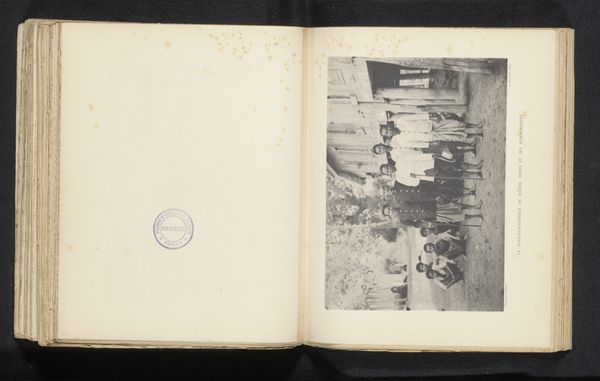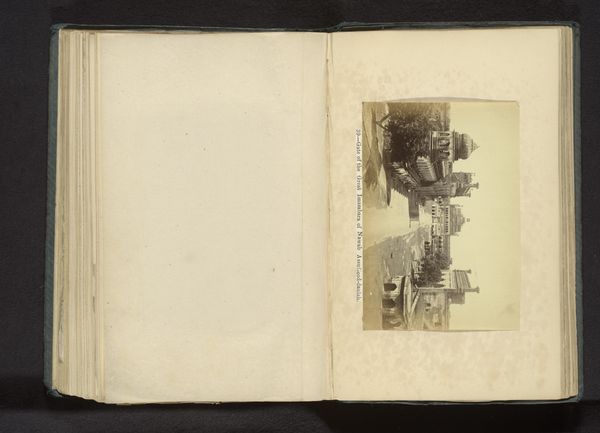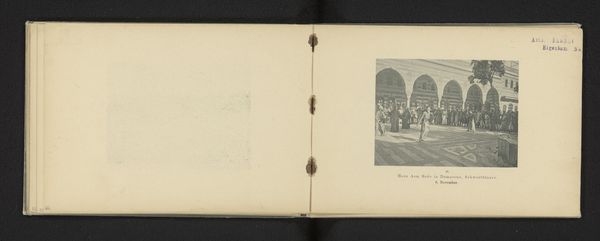
Keizer Wilhelm II van Duitsland en een groep metgezellen voor een ruïne in 'Atlit, Israël before 1899
0:00
0:00
photography, albumen-print
#
portrait
#
landscape
#
photography
#
orientalism
#
albumen-print
Dimensions: height 89 mm, width 119 mm
Copyright: Rijks Museum: Open Domain
Curator: Here we have an albumen print, a photograph from before 1899, titled "Keizer Wilhelm II van Duitsland en een groep metgezellen voor een ruïne in 'Atlit, Israël" or, in English, "Kaiser Wilhelm II of Germany and a Group of Companions in Front of a Ruin in 'Atlit, Israel." Editor: My first impression is that it appears staged. The light is quite harsh, but the arrangement of the figures—the central placement of Wilhelm—feels very deliberate. It conveys authority. Curator: Absolutely. The photograph is rich in symbolic layers. Wilhelm's presence at 'Atlit—then part of Ottoman Palestine—resonates with German imperial ambitions in the region. The ruins become symbolic of past empires, perhaps a hint at the transient nature of power but also a declaration of Germany as the new inheritor. Editor: The tonality of the albumen print is particularly interesting here. That sepia wash lends an aura of age and timelessness, almost romanticizing this event, which probably feels pretty manipulative given the overt display of imperial might on display. The texture almost acts like a veil. Curator: Consider, too, the figures surrounding Wilhelm. Their varied dress hints at the diversity within his retinue but also evokes images of the Holy Land familiar from paintings, grounding the visit within a biblical narrative. He's projecting not just political power but spiritual authority. Editor: From a formal perspective, it’s interesting how the massive ruins almost function as a backdrop. They could almost be props in a theater piece; they define space for Wilhelm and his comrades and add a very striking visual counterweight to the figures below. I like the texture contrast as well. Curator: Yes. This isn't just a travelogue. It's a crafted image meant to project a specific image of Wilhelm, one linked to history, religion, and imperial destiny. The selection of this location—'Atlit—and the framing of Wilhelm against its ruins speaks volumes. Editor: Seeing it laid out now, I wonder about its role as propaganda—what was its original purpose and reach? I mean it could’ve been disseminated to boost public support, or for internal archival purposes, for example. But those aren’t mutually exclusive, are they? Curator: Precisely. It highlights how photographic images of this time period actively worked in the cultivation of political mythology. Editor: I find that especially true when you think about the permanence inherent in physical photographic prints. It all reinforces the notion of power and the ruler’s dominance—carved in stone so to speak, no pun intended. Curator: It leaves us with questions about how such carefully constructed images shaped perceptions of empire and identity then… and, how images like these continue to resonate with political meaning today. Editor: Well, I appreciate understanding not only the artistic intent behind such imagery but what such a seemingly static scene might tell us about those particular ruins today, in the present moment.
Comments
No comments
Be the first to comment and join the conversation on the ultimate creative platform.

